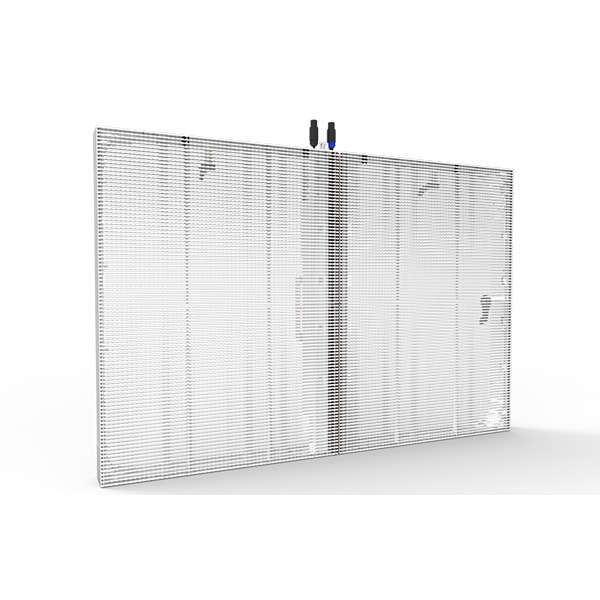Today, Samsung unveiled the first commercial installation of its cutting-edge mirror display at an upscale hair salon in Seoul, South Korea. The 55-inch display units act as a mirror while playing media over the mirrored image.
Effectively, however, the display represents a (90%) transparent layer over an underlying mirror, and is among the early retail-led examples of a device seen frequently in science-fiction movies of the last 20-30 years – a genuinely transparent display. The Planar LookThru OLED Series offers similar reflectivity characteristics, but the prohibitive cost of the technology, as with Samsung, is keeping it within the business display and high-end retail space.
Using Intel 3-D camera technology, Samsung’s displays can also show customers in different hair styles, colors and trends, allowing the hairdressers at the Leekaja Hairbis’ Jamsil salon to provide customized, interactive consultations with their clients. Samsung expects mirror displays to be used in retail, interior design, furniture and fashion markets in the future. Similar 55-inch Samsung mirror displays will be available for purchase worldwide in fall 2016.
The Samsung mirror display ML55E provides 90% transparency and 55% reflectivity, designed to minimize visual distraction and provide clarity, both in the reflective mirror surface and in the media content overlays. The mirror display comes with the mirror embedded into the Transparent Glass LED Display, allowing for parallel installation (rather than installing the two separately.) It also comes with a proximity sensor, which automatically senses when a customer is approaching the display, allowing a change from promotional signage to mirror display. Proximity sensors can also be used to welcome customers to a store as an additional retail application.
Samsung’s OLED mirrored / Transparent LED Display Screen has been receiving a lot of attention since they were first unveiled last June, at the Retail Asia Expo 2015 in Hong Kong. At that time Oseung Yang, Vice President at Samsung Display Company, said, “Samsung has a long legacy of leadership in technology innovation for digital signage, as well as for other applications, and we are now leading the next wave of digital signage advancement.” He went on, “We are very excited to help bring a new interactive dimension to the world of multi-channel shopping through the integration of our newest OLED displays with Intel® RealSense™ technology.” Retail applications of the transparent screen (without the mirrored backing) were displayed at the 2015 IFA convention in Berlin.

Effectively, however, the display represents a (90%) transparent layer over an underlying mirror, and is among the early retail-led examples of a device seen frequently in science-fiction movies of the last 20-30 years – a genuinely transparent display. The Planar LookThru OLED Series offers similar reflectivity characteristics, but the prohibitive cost of the technology, as with Samsung, is keeping it within the business display and high-end retail space.
Using Intel 3-D camera technology, Samsung’s displays can also show customers in different hair styles, colors and trends, allowing the hairdressers at the Leekaja Hairbis’ Jamsil salon to provide customized, interactive consultations with their clients. Samsung expects mirror displays to be used in retail, interior design, furniture and fashion markets in the future. Similar 55-inch Samsung mirror displays will be available for purchase worldwide in fall 2016.
The Samsung mirror display ML55E provides 90% transparency and 55% reflectivity, designed to minimize visual distraction and provide clarity, both in the reflective mirror surface and in the media content overlays. The mirror display comes with the mirror embedded into the Transparent Glass LED Display, allowing for parallel installation (rather than installing the two separately.) It also comes with a proximity sensor, which automatically senses when a customer is approaching the display, allowing a change from promotional signage to mirror display. Proximity sensors can also be used to welcome customers to a store as an additional retail application.
Samsung’s OLED mirrored / Transparent LED Display Screen has been receiving a lot of attention since they were first unveiled last June, at the Retail Asia Expo 2015 in Hong Kong. At that time Oseung Yang, Vice President at Samsung Display Company, said, “Samsung has a long legacy of leadership in technology innovation for digital signage, as well as for other applications, and we are now leading the next wave of digital signage advancement.” He went on, “We are very excited to help bring a new interactive dimension to the world of multi-channel shopping through the integration of our newest OLED displays with Intel® RealSense™ technology.” Retail applications of the transparent screen (without the mirrored backing) were displayed at the 2015 IFA convention in Berlin.











